Floors are a common source of noise pollution. People (and pets) walking overhead, objects falling, conversations, music, and televisions are just some of the different types of sound that can travel through a floor.
That unwanted noise can be a major distraction as you’re trying to sleep, get work done, or when you just want to kick back and relax in your apartment.
Whether you’re looking to cut out the blaring sounds coming from your noisy neighbors below – or you’re the noisy one – there are ways that you can reduce the sound that travels through the floors so you can make your apartment (or the apartment below you) a more peaceful place.
The goal of any soundproofing project – including apartment floors – is to reduce the amount of noise that travels through a surface.
In order to achieve that goal, you need to understand how sound travels so you can determine which type of sound you are dealing with and use the proper methods to address the issue.
In residential settings, there are two kinds of sound: airborne and structure-borne.
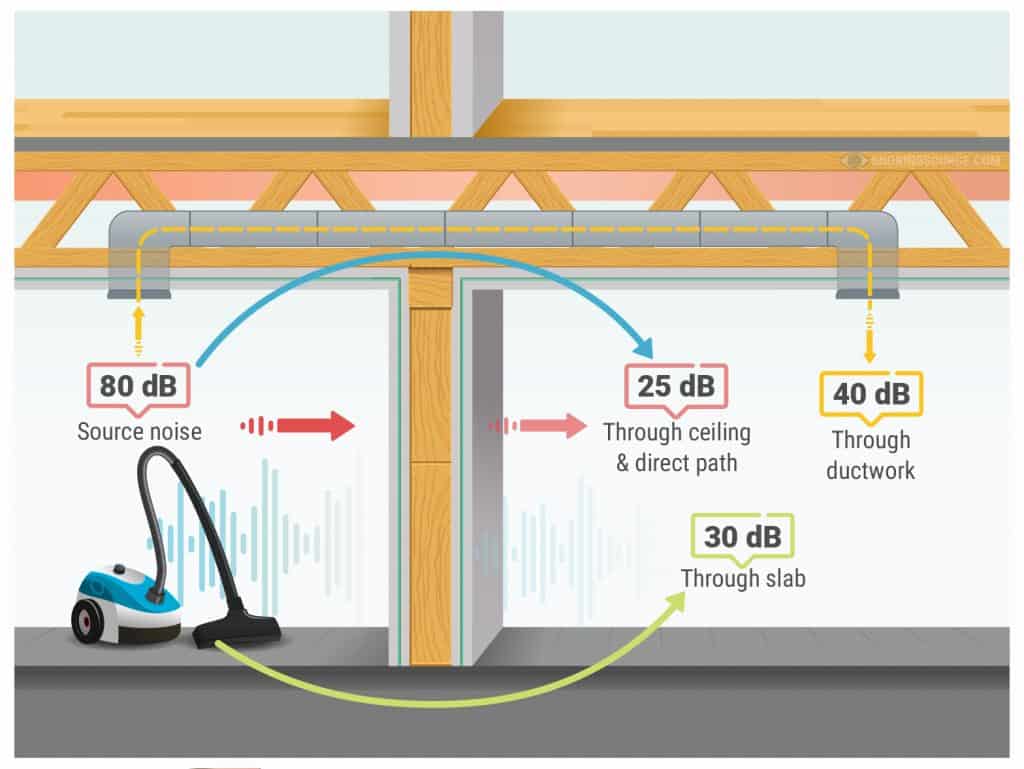
Put simply, airborne sound is any sound that is transmitted through the air. Common examples include people talking, music from a radio, television programs, and dogs barking.
When an object makes a noise, soundwaves are generated. Those soundwaves are picked up by and travel through the air until they hit into a solid structure, creating a vibration. The vibration then travels through the solid structure and radiates through the other side.
This is why the music your downstairs neighbor plays, the conversations they have, or their barking dogs may sound as if it is traveling up through your floor and into your apartment.
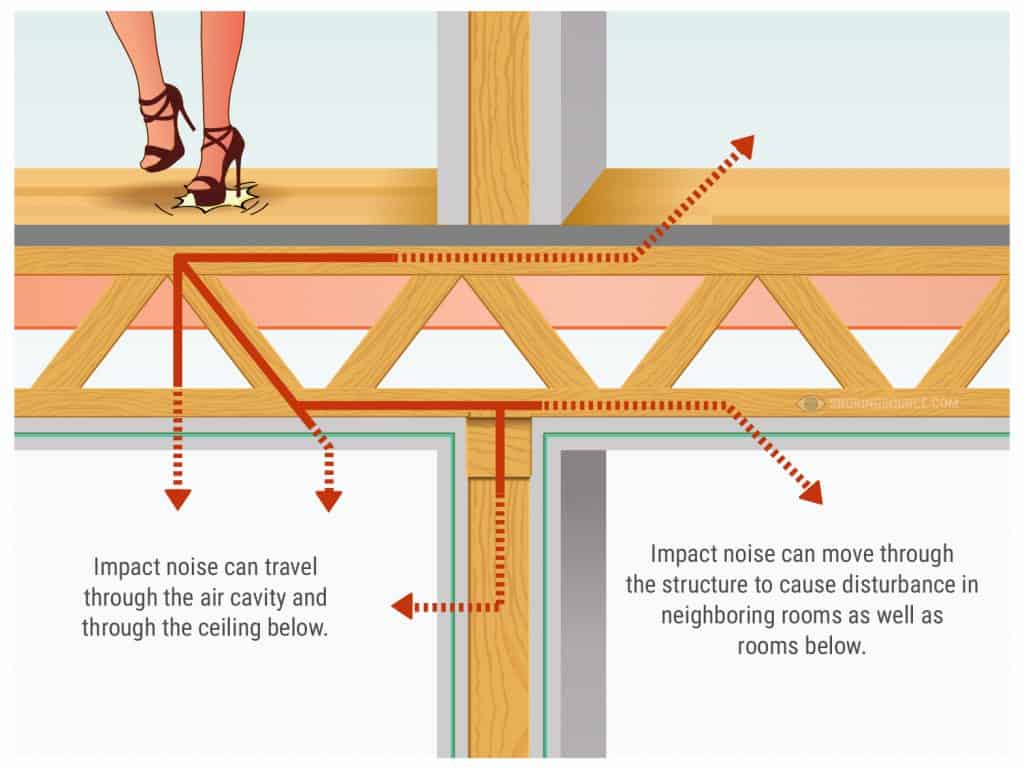
Unlike airborne sound, structure-borne sound occurs when an object creates an impact with a solid structure; hence why this type of sound is also known as “impact noise” or “impact sound.”
The impact of an object into a solid structure causes both sides of the structure to vibrate, creating soundwaves. Those soundwaves then travel through the solid structure. For example, if someone below you bangs a ball into the ceiling, you can hear the noise through your floor. Or, if your downstairs neighbors complain that they can hear your footsteps through their ceiling, they’re referring to structure-borne noise.
Pinpointing the type of noise that’s traveling through your apartment floor involves a simple test. When you hear a sound, place your hand on the floor; if you feel the floor vibrating, then its structure-borne noise, but if there’s no vibration, then its airborne noise.
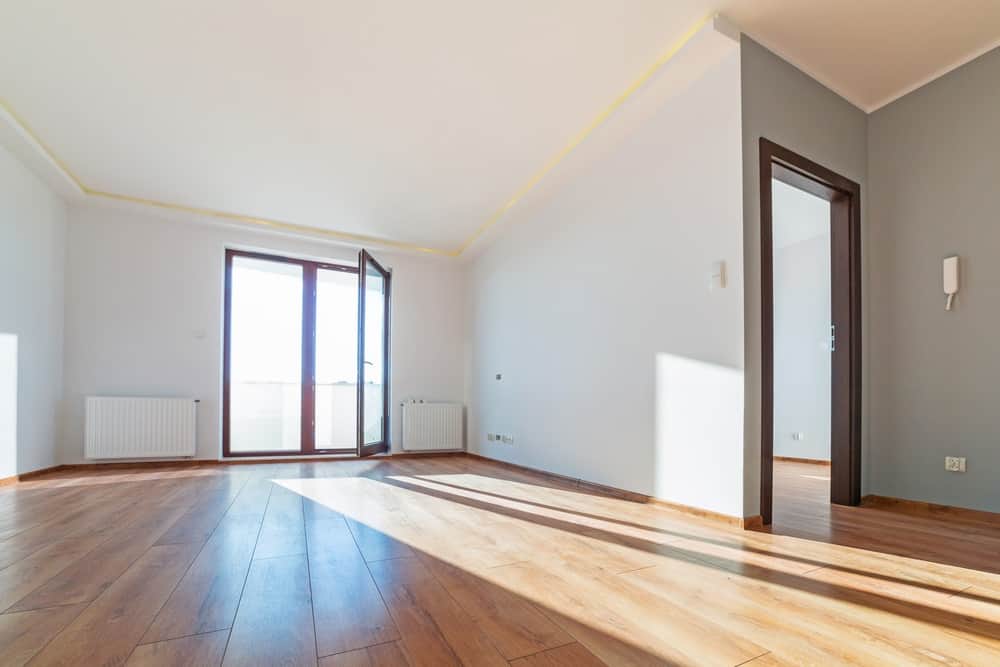
Soundproofing an apartment floor offers many benefits. The most obvious benefit is that it will allow you to enjoy a more peaceful home; or if you’re the noisy one, it will make your downstairs neighbor’s home quieter (and your downstairs neighbors may like you more).
If the people who live below you are complaining about the noise that’s coming through their ceiling, that means they can probably hear your conversations, what you’re watching on TV, and various other things that you’re doing inside your apartment. As such, soundproofing your apartment floors will help to preserve your privacy.
Lastly, soundproofing the floors can improve the energy efficiency of your home. Many noise cancelling materials act as a source of thermal insulation, thus reducing heat transfer.
That means that less conditioned air (heated or cooled) will enter or vacate your apartment through the floors. This reduction in heat transfer will not only improve the comfort of your home, but it can also help you save on your energy bills.
There are a number of techniques that can be used to soundproof an apartment floor. Below, we highlight some of the most effective methods that can block out both airborne and structure-borne sound.
It’s important to note, however, while not all options do, some require construction; therefore, if you’re renting, it’s important to check with your landlord before you make any structural changes to your floors.
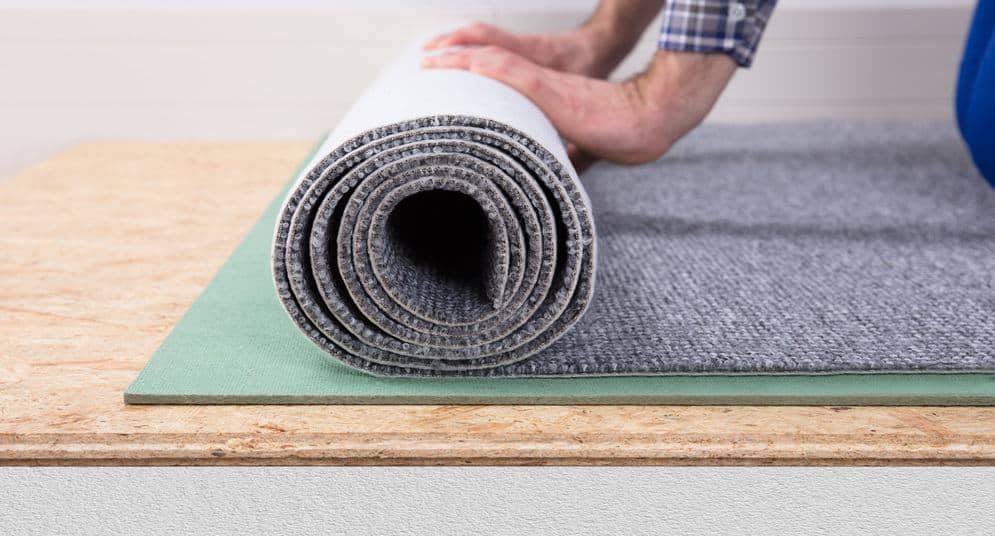
If the floors in your apartment are made of a hard material, such as tile, laminate, or wood, laying carpeting or rugs can be a huge help.
Soundwaves have a much easier time traveling through hard structures, as there’s nothing to stop them. Carpets and rugs add softness and density to the floor, and therefore, they do a much better job of absorbing noise.
If you’re renting, speak with your landlord to find out if laying carpeting is an option; you could offer to pay for the installation yourself, or he or she may cover all or a part of the expense for you.
To maximize the absorption of sound, install sound deadening underlayment before having the carpeting installed. Underlayment, which can be made from several different materials, such as cork, rubber, and foam, adds more density to the floors and creates another surface to absorb soundwaves.
If you rent your apartment and your landlord doesn't allow you to install wall to wall carpeting, consider using area rugs as a soundproofing medium instead.
Rugs act much the same way as carpets, as they add density and absorb sound. Place a soundproof mat underneath the area rug to enhance the noise reduction (and prevent the rugs from moving about); do make sure to use a mat that’s the same size as the area rug or cut the material to size.
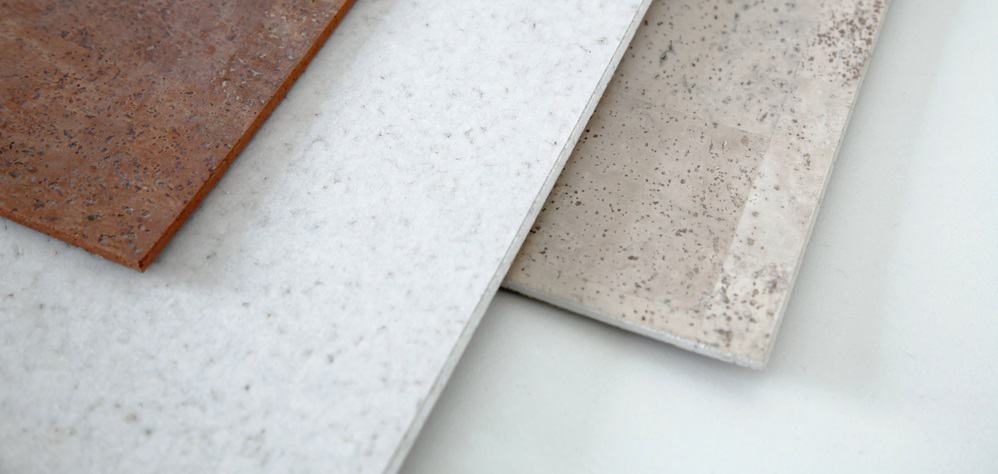
If you aren’t keen on carpeting or area rugs, consider using cork tiles instead. Cork tiles are an on-flooring soundproofing material, meaning that they can be laid on top of the existing floor. Generally, they’re snapped together and placed right on top of the existing floor.
Cork tiles will add density to the floor and it acts as a great sound absorber, so it can easily help to reduce the transmission of unwanted noise.
If you want to up the soundproofing capabilities, try placing a soundproofing mat – like the type that you would use to place under an area rug – underneath the cork tiles.
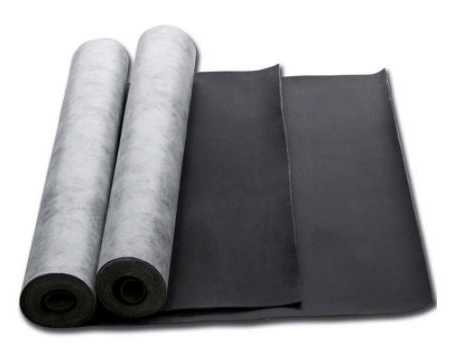
Mass Loaded Vinyl (MLV) is a dense, yet flexible vinyl sheeting that is usually impregnated with small metal pieces. The density of the material makes it a great soundproofing material; it’s also relatively cost-effective and easy to install.
MLV could be used as an underlayment for your flooring. If you’re a renter, again, we urge you to check with your landlord to ensure that you are permitted to make structural changes to your apartment. If you get the OK, you can tear up your existing material on your floors and prepare it for a new flooring material. During preparations, install MLV as an underlayment for your new floors.
Accurately measure the space and cut the material to size. If the room is particularly large, you could lay it in sections as opposed to one solid piece to make the installation more manageable.
Simply tack the MLV in place using staples or finishing nails. You could also apply soundproofing compound to the sub-floor before laying the MLV, such as Green Glue, for even better noise reduction. Once the MLV is in place, you can then install your new flooring material.
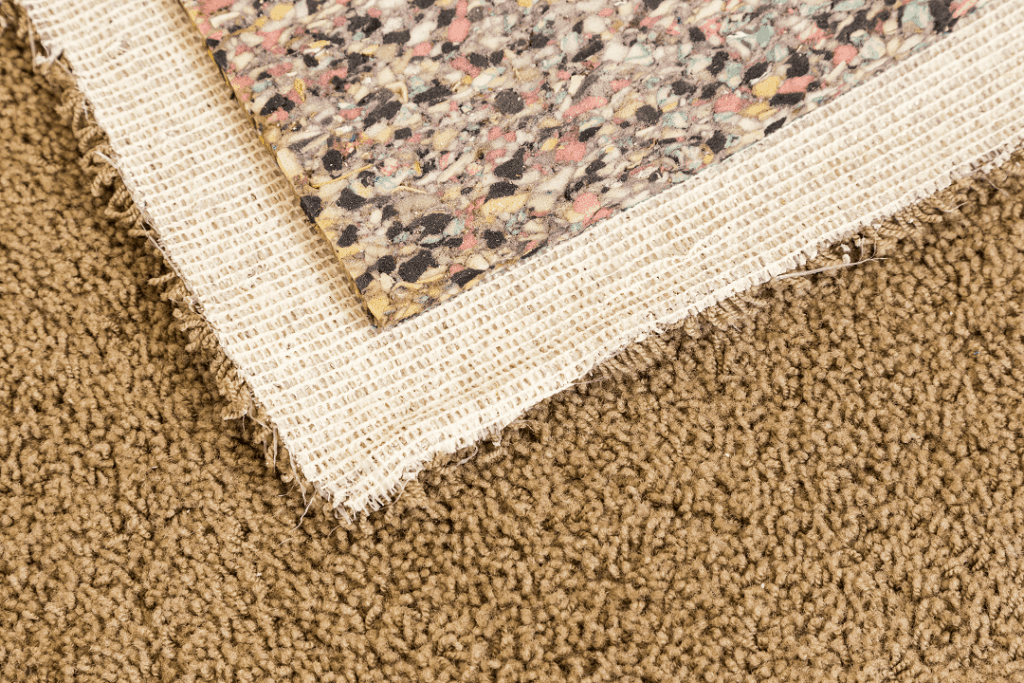
If you’re planning on installing carpeting or you already have carpeting and you want to reduce noise transmission through your floors, try using carpet padding.
There are several different types of carpet padding to choose from. Examples of some of the different options include felt, memory foam, and a combination of rubber and foam.
If you’re a do-it-yourself type of person, you could lay the padding yourself. Pull up the existing carpeting and lay down the padding, or install the padding prior to having new carpeting laid. If you aren’t comfortable doing the job on your own, consult with a reputable flooring professional.
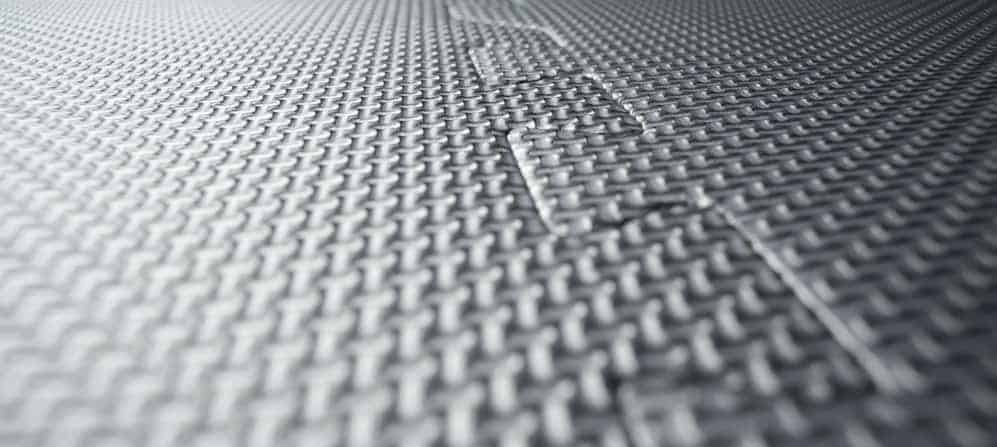
If you are looking for the easiest and most affordable way to soundproof your apartment floors, give interlocking floor mats a try. These mats are made from a wide assortment of materials, ranging from cork (as mentioned above) to foam and even combinations of materials, such as foam and rubber, or cork and rubber.
Installing interlocking floor mats is pretty easy. Just position them on the floor and connect them together, kind of like a puzzle. The mats will add density to the floor, which will help to reduce noise transmission. They’ll also add softness to the floors and provide thermal insulation.
Apartment living can be great, but when unwanted noise is pouring through your floors from the unit below you – or when the noise your creating travels through the floors and into you’re the apartment below you – it can be a drag. By using any of the above-mentioned techniques, you can soundproof your apartment floors and create a quieter, more peaceful space.

Snoringsource.com is a participant in the Amazon Services LLC Associates Program, an affiliate advertising program designed to provide a means for website owners to earn advertising fees by advertising and linking to amazon(.com, .co.uk, .ca etc) and any other website that may be affiliated with Amazon Service LLC Associates Program.